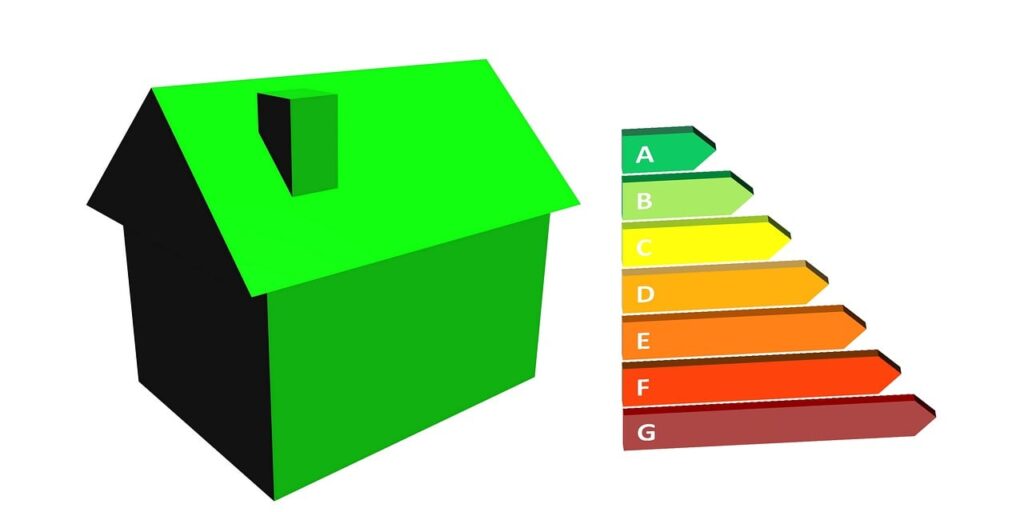If you’re considering installing an air conditioning system in your home, understanding the carbon footprint and environmental impact of different options is crucial. In this article, we will explore the specifics of mini-split AC systems and shed light on their carbon emissions and overall environmental impact. By gaining a better understanding of these factors, you’ll be able to make an informed decision that aligns with your eco-friendly values while keeping your home cool and comfortable.

This image is property of pixabay.com.
Understanding Mini-Split AC Systems
What is a Mini-Split AC System?
A Mini-Split AC system is a type of heating, ventilation, and air conditioning (HVAC) system that provides both cooling and heating functions. Unlike traditional central air conditioning systems that rely on ductwork to distribute conditioned air, mini-split systems consist of two main components: an outdoor unit and one or more indoor units. These indoor units are connected to the outdoor unit through refrigerant lines and can be installed in different rooms or zones, allowing for personalized temperature control.
Common uses of Mini-Split AC Systems
Mini-Split AC systems are versatile and can be used in various settings. They are particularly popular in homes where adding ductwork for a central HVAC system is not feasible or cost-effective. Mini-splits are also commonly used in commercial spaces, such as office buildings and retail stores, as they offer efficient zone cooling and heating capabilities. Additionally, mini-split systems can be found in hotels, hospitals, schools, and even mobile homes, providing comfort and climate control in a wide range of environments.
How Mini-Split AC Systems work
Mini-Split AC systems work on the principles of refrigeration and heat transfer. The outdoor unit contains a compressor and a condenser coil, while the indoor unit houses an evaporator coil and a fan. Refrigerant circulates between the indoor and outdoor units, absorbing heat from the indoor air and releasing it outside. In cooling mode, the system extracts heat from the indoor air, cooling it before circulating it back into the room. In heating mode, the process is reversed, with the system extracting heat from the outdoor air and releasing it indoors, effectively heating the room.
Energy Efficiency of Mini-Split AC Systems
SEER Rating and its correlation with energy efficiency
The energy efficiency of Mini-Split AC systems is measured by the Seasonal Energy Efficiency Ratio (SEER) rating. The SEER rating indicates the cooling output of the system divided by the energy consumed over a typical cooling season. Higher SEER ratings indicate greater energy efficiency, as the system can deliver more cooling power per unit of electricity consumed. Energy-efficient Mini-Split AC systems with high SEER ratings can save significant amounts of energy and reduce electricity bills compared to less efficient systems.
Inverter Technology in Mini-Split AC systems
One key factor contributing to the energy efficiency of Mini-Split AC systems is the use of inverter technology. Inverter technology allows the system to vary the compressor speed and refrigerant flow rate based on the actual cooling or heating demands. Unlike conventional AC systems that frequently cycle on and off to maintain the desired temperature, inverter-driven Mini-Split AC systems adjust their output to match the required capacity more precisely. This allows for more consistent comfort, reduced energy consumption, and extended equipment lifespan.
How energy efficiency affects the carbon footprint
The carbon footprint of an appliance or system refers to the amount of greenhouse gas emissions it produces throughout its lifecycle, from manufacturing to disposal. Energy efficiency plays a crucial role in reducing the carbon footprint of Mini-Split AC systems. By consuming less electricity to provide cooling or heating, energy-efficient Mini-Splits emit fewer greenhouse gases, such as carbon dioxide (CO2), compared to less efficient systems. This is particularly important considering the environmental impact of CO2 emissions on climate change and global warming.
Carbon Footprint of Mini-Split AC Systems
Definition of Carbon Footprint
The carbon footprint of a Mini-Split AC system refers to the total amount of greenhouse gas emissions, measured in CO2 equivalents, associated with the system’s operation over its lifetime. This includes not only the emissions generated from the electricity consumption but also those resulting from the production, distribution, and disposal of the system. By understanding and minimizing the carbon footprint of Mini-Split AC systems, we can mitigate their impact on climate change and work towards a more sustainable future.
Factors contributing to the Carbon Footprint of Mini-Split AC Systems
Several factors contribute to the carbon footprint of Mini-Split AC systems. The primary factor is the energy source used for electricity generation. If the electricity comes from fossil fuel-based power plants, the carbon footprint will be higher compared to if it comes from renewable energy sources, such as solar or wind. Other factors include the energy efficiency of the system, the refrigerants used, and the manufacturing processes involved. By optimizing these factors, manufacturers can reduce the carbon footprint associated with Mini-Split AC systems.
Average Carbon Footprint of a Mini-Split AC System
The average carbon footprint of a Mini-Split AC system can vary depending on several factors, such as the energy efficiency rating, the size of the system, and the region it is installed in. However, studies have shown that energy-efficient Mini-Split AC systems with high SEER ratings and inverter technology can significantly reduce greenhouse gas emissions compared to traditional cooling and heating systems. On average, the carbon footprint of a Mini-Split AC system can be up to 50% lower than that of a central air conditioning system.
Environmental Impact of Mini-Split AC Systems
Contribution to Global Warming
The environmental impact of Mini-Split AC systems extends beyond their carbon footprint. The refrigerants used in these systems can contribute to global warming if they are potent greenhouse gases, such as hydrofluorocarbons (HFCs). However, recent advancements in refrigerant technology have led to the development of alternative refrigerants with lower global warming potential. Many modern Mini-Split AC systems now use environmentally friendly refrigerants, such as R-410A or R-32, which have significantly reduced global warming potential compared to older refrigerants like R-22.
Effect on Air Quality
Mini-Split AC systems can have a positive effect on indoor air quality. Unlike centralized systems that can recirculate air through ductwork, mini-splits provide direct cooling and heating to individual rooms. This localized approach reduces the risk of indoor air pollutants, such as allergens, dust, and mold, being spread throughout the entire building. Additionally, some Mini-Split AC systems feature filtration systems that can remove particulate matter and improve overall air quality, providing a healthier environment for occupants.
Resource depletion
The manufacturing of Mini-Split AC systems requires various resources, including metals, plastics, and electronics. While these resources are not directly related to the carbon footprint or environmental impact during the system’s operation, their extraction and processing can contribute to resource depletion and habitat destruction. To mitigate this impact, manufacturers aim to improve the efficiency of resource utilization and implement sustainable sourcing practices, ensuring responsible use of materials and minimizing the depletion of natural resources.
Disposal and Recycling Concerns
Another environmental consideration is the proper disposal and recycling of Mini-Split AC systems at the end of their lifecycle. Improper disposal can lead to the release of harmful substances into the environment, while failing to recycle valuable components and materials results in unnecessary waste and resource depletion. To address these concerns, manufacturers and regulatory bodies are implementing guidelines and programs to encourage the responsible disposal and recycling of Mini-Split AC systems, promoting a circular economy approach to waste management.

This image is property of pixabay.com.
Comparative Analysis with Other AC Systems
Mini-Split AC System vs. Central Air Conditioning
When comparing Mini-Split AC systems to central air conditioning systems, several factors come into play. Central air conditioning systems require extensive ductwork, which can be expensive to install and maintain. Mini-Split AC systems, on the other hand, are ductless and offer greater flexibility in terms of installation and zoning. Central systems also tend to have lower SEER ratings compared to modern Mini-Splits, leading to higher energy consumption and increased carbon emissions. Overall, Mini-Split AC systems offer a more energy-efficient and environmentally friendly alternative to central air conditioning.
Mini-Split AC System vs. Window Units
Window units and Mini-Split AC systems are both popular choices for individual room cooling. However, window units are often less energy-efficient due to air leakage and limited insulation. They can also obstruct natural light and provide an easy access point for insects and intruders. Mini-Split AC systems, on the other hand, provide better insulation, higher energy efficiency, and quieter operation. They are also aesthetically more pleasing, as the indoor units can be mounted on walls or ceilings, offering a sleek and unobtrusive appearance.
Mini-Split AC System vs. Portable AC Units
Portable AC units are another alternative to Mini-Split systems for room cooling, especially in temporary or small space applications. While portable units offer convenience and mobility, they often sacrifice energy efficiency for portability. Their exhaust hoses can also be a source of air leakage and might require frequent repositioning. Mini-Split AC systems, with their higher energy efficiencies and more permanent installation, provide a better long-term solution for cooling multiple rooms or larger areas, without compromising on energy consumption and environmental impact.
Carbon Emission Reduction Strategies
Using Energy-Efficient Models
One effective strategy to reduce the carbon emissions associated with Mini-Split AC systems is to opt for energy-efficient models with high SEER ratings and inverter technology. These systems maximize cooling and heating efficiency, reducing both energy consumption and greenhouse gas emissions. By choosing energy-efficient models, individuals and businesses can contribute to a greener future while enjoying the comfort and benefits of HVAC systems.
Proper Use and Maintenance
Proper use and maintenance of Mini-Split AC systems are essential for maximizing energy efficiency and minimizing carbon emissions. Regularly cleaning or replacing air filters promotes adequate airflow and reduces strain on the system. Setting appropriate temperatures and using programmable thermostats can help optimize energy usage. Additionally, scheduling professional maintenance and inspections ensures that the system operates at peak efficiency, identifying and addressing any potential issues that may affect performance and energy consumption.
Leveraging renewable energy sources for usage
Another effective strategy to reduce carbon emissions is to power Mini-Split AC systems with renewable energy sources. Installing solar panels or utilizing wind energy can provide a clean and sustainable source of electricity to operate the systems. By coupling energy-efficient Mini-Split AC systems with renewable energy, individuals and businesses can significantly reduce their carbon footprint and minimize their environmental impact, making significant strides toward a more sustainable future.

This image is property of pixabay.com.
Energy Efficiency Improvements in Mini-Split Systems
Advancements in inverter technology
Inverter technology continues to advance in Mini-Split AC systems, leading to even greater energy efficiency. Modern inverter-driven systems can adjust the compressor speed and refrigerant flow more accurately, responding precisely to fluctuating cooling or heating demands. This fine-tuning capability ensures that the system operates at the optimal efficiency level, reducing energy consumption and improving overall performance. Advancements in inverter technology also contribute to quieter operation and increased comfort for users.
Innovations in insulation and heat-exchange
Insulation and heat-exchange technologies play a crucial role in the energy efficiency of Mini-Split AC systems. Innovations in insulation materials and techniques help minimize heat loss or gain along the refrigerant lines, ensuring that the system operates at maximum efficiency. Improvements in heat-exchange surfaces and designs enhance the transfer of thermal energy, allowing for more efficient cooling and heating performance. These continuous innovations contribute to the overall energy efficiency improvements of Mini-Split AC systems.
Progress in smart controls and automation
The integration of smart controls and automation in Mini-Split AC systems has the potential to further optimize energy efficiency. Smart thermostats equipped with features such as occupancy sensors and learning algorithms can adapt to users’ behavior and adjust the system’s operation accordingly, minimizing energy wastage. Remote control and monitoring capabilities enable users to manage their Mini-Split AC systems efficiently, ensuring that energy is used only when needed. The ongoing progress in smart controls and automation aims to provide users with greater control over energy usage and contribute to more eco-friendly HVAC solutions.
Policy Guidelines and Standards
Energy Star Ratings and criteria for Mini-Split AC Systems
Energy Star is a widely recognized program that establishes energy efficiency guidelines and criteria for various appliances and systems, including Mini-Split AC systems. Energy Star-rated Mini-Splits must meet strict energy efficiency standards set by the U.S. Environmental Protection Agency. These standards ensure that certified models provide significant energy savings while maintaining high performance and comfort levels. By choosing Energy Star-rated Mini-Split AC systems, consumers can make informed decisions and contribute to reducing greenhouse gas emissions.
International Policies and Standards on Carbon Emissions
Many countries have adopted policies and standards aimed at curbing carbon emissions and promoting energy efficiency in various sectors, including HVAC systems. These policies often include regulations on minimum energy efficiency standards, restrictions on the use of harmful refrigerants, and incentives for adopting greener technologies. International agreements, such as the Paris Agreement, further emphasize the need to tackle climate change collectively. Compliance with these policies and standards plays a vital role in reducing the environmental impact of Mini-Split AC systems on a global scale.
Effects of regulations on the production and use of Mini-Split AC Systems
Regulations related to the production and use of Mini-Split AC systems have significant implications for their energy efficiency and environmental impact. These regulations often focus on factors such as energy efficiency standards, refrigerant choice, and manufacturing processes. They aim to promote the adoption of cleaner and more efficient technologies while ensuring the safety and performance of the systems. By enforcing such regulations, governments and regulatory bodies have the ability to drive innovation and improve the overall sustainability of Mini-Split AC systems.

Impact of Climate Change on AC Usage
Projected increase in AC demand due to global warming
As the global climate continues to warm, the demand for air conditioning is projected to increase significantly. Rising temperatures, heatwaves, and changing weather patterns are likely to drive greater adoption of cooling technologies to ensure comfort and mitigate health risks. This increased AC demand presents challenges in terms of energy consumption and carbon emissions, necessitating the need for energy-efficient and environmentally friendly solutions like Mini-Split AC systems.
Implications for energy consumption and carbon emissions
The projected increase in AC demand poses substantial implications for energy consumption and carbon emissions. Without efficient and sustainable cooling solutions, the rise in energy usage could lead to a corresponding surge in greenhouse gas emissions, exacerbating the climate crisis. Mini-Split AC systems offer a way to meet the growing demand for cooling while minimizing the carbon footprint. By choosing energy-efficient Mini-Splits powered by renewable energy sources, individuals and organizations can play a vital role in reducing energy consumption and carbon emissions associated with AC usage.
Preparing for a sustainable future in Air Conditioning
The impact of climate change and the increasing need for air conditioning call for proactive measures to ensure a sustainable future. This includes investing in the research and development of energy-efficient cooling technologies, improving energy infrastructure to accommodate cleaner and greener energy sources, and implementing policies and regulations that promote eco-friendly solutions like Mini-Split AC systems. By working collectively towards sustainable cooling, we can mitigate the environmental impact of AC usage and pave the way for a more sustainable and resilient future.
Conclusion: Future of Mini-Split AC Systems
Prospects for development in energy efficiency
The future of Mini-Split AC systems looks promising in terms of energy efficiency. Advancements in inverter technology, insulation, and heat-exchange, along with the integration of smart controls and automation, continue to improve the energy efficiency of these systems. As manufacturers strive to meet and exceed energy efficiency standards, consumers can expect even greater energy savings and reduced carbon emissions from their Mini-Split AC systems.
The role of policy and innovation in reducing Carbon Footprint
Policies and regulations, coupled with technological innovations, play a crucial role in reducing the carbon footprint of Mini-Split AC systems. By enforcing energy efficiency standards, promoting the use of sustainable refrigerants, and incentivizing the adoption of energy-efficient technologies, policies can drive the industry towards more sustainable practices. Simultaneously, continuous innovation in areas such as inverter technology, insulation, and smart controls leads to more energy-efficient Mini-Split AC systems.
Transitioning towards more environmentally friendly AC solutions
As we strive for a more sustainable future, transitioning towards environmentally friendly AC solutions becomes imperative. Mini-Split AC systems, with their energy efficiency, reduced carbon footprint, and better control over indoor environment, provide a viable alternative to traditional cooling and heating systems. By choosing Mini-Splits and adopting energy-efficient practices, we can collectively reduce our environmental impact and contribute to a healthier planet for future generations.


